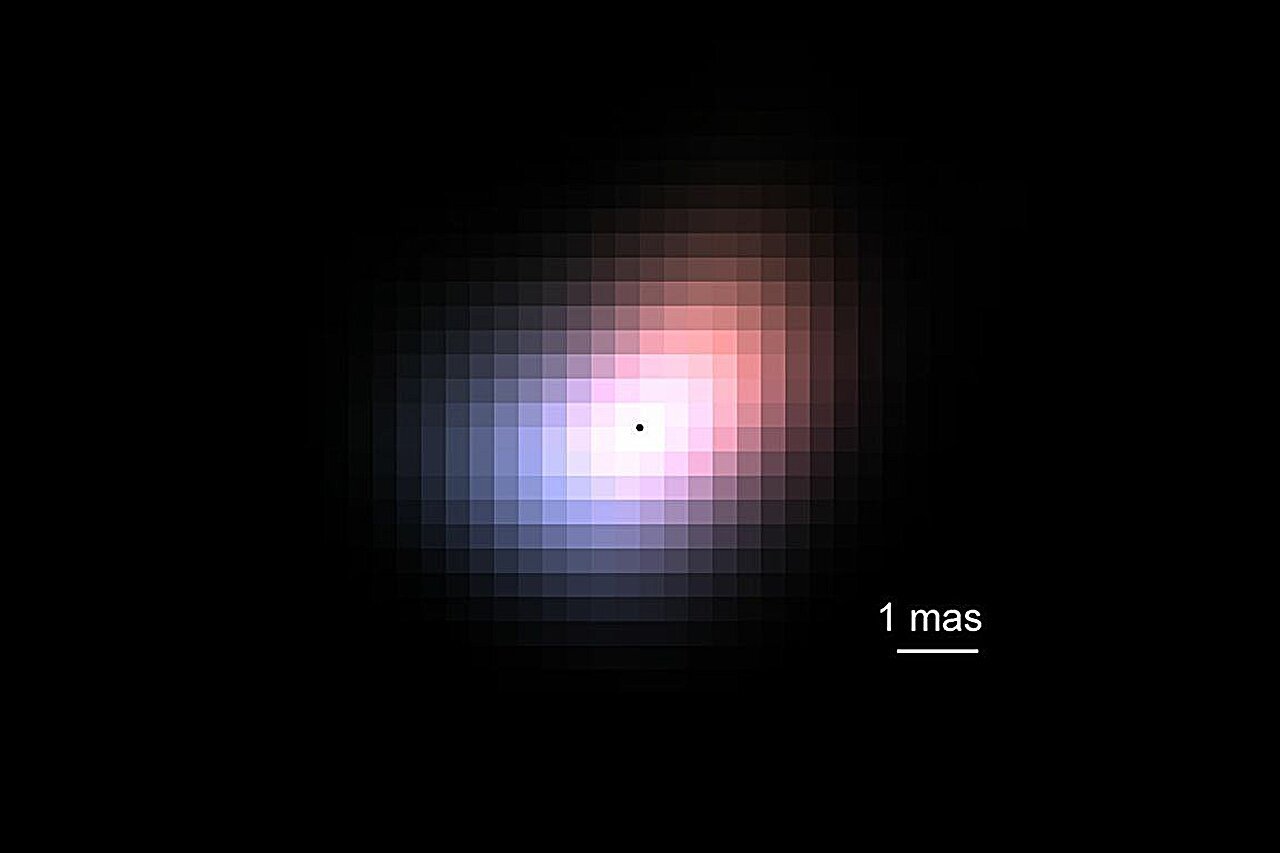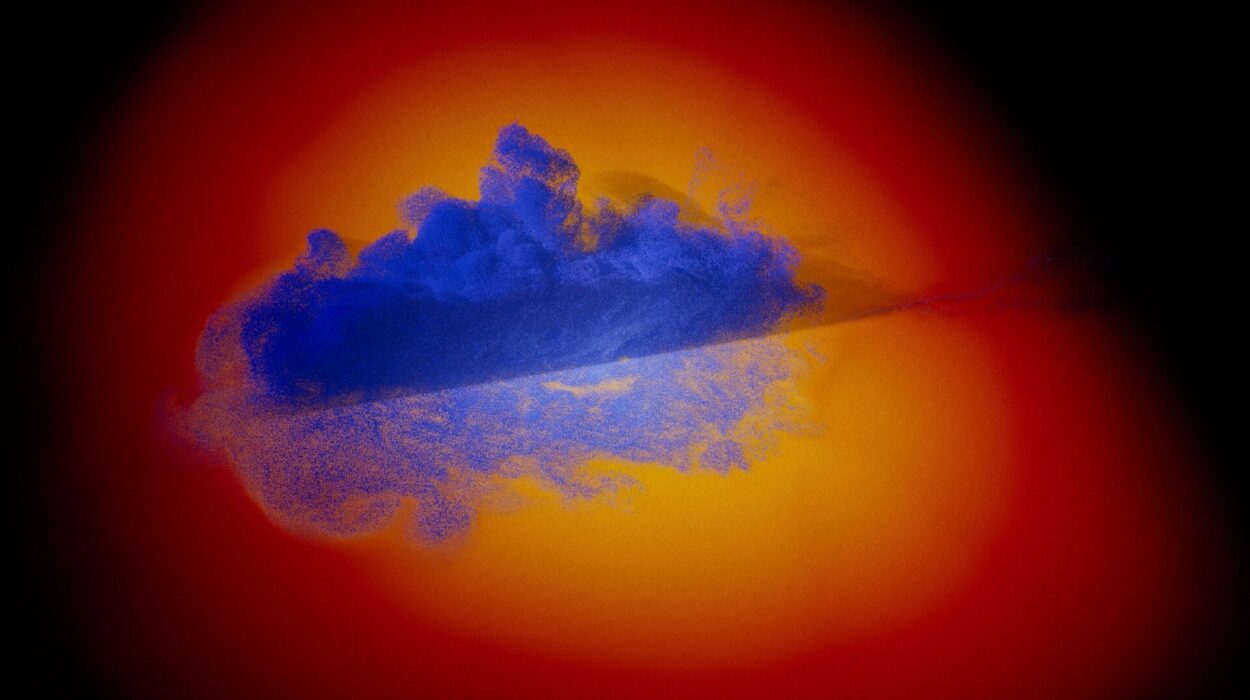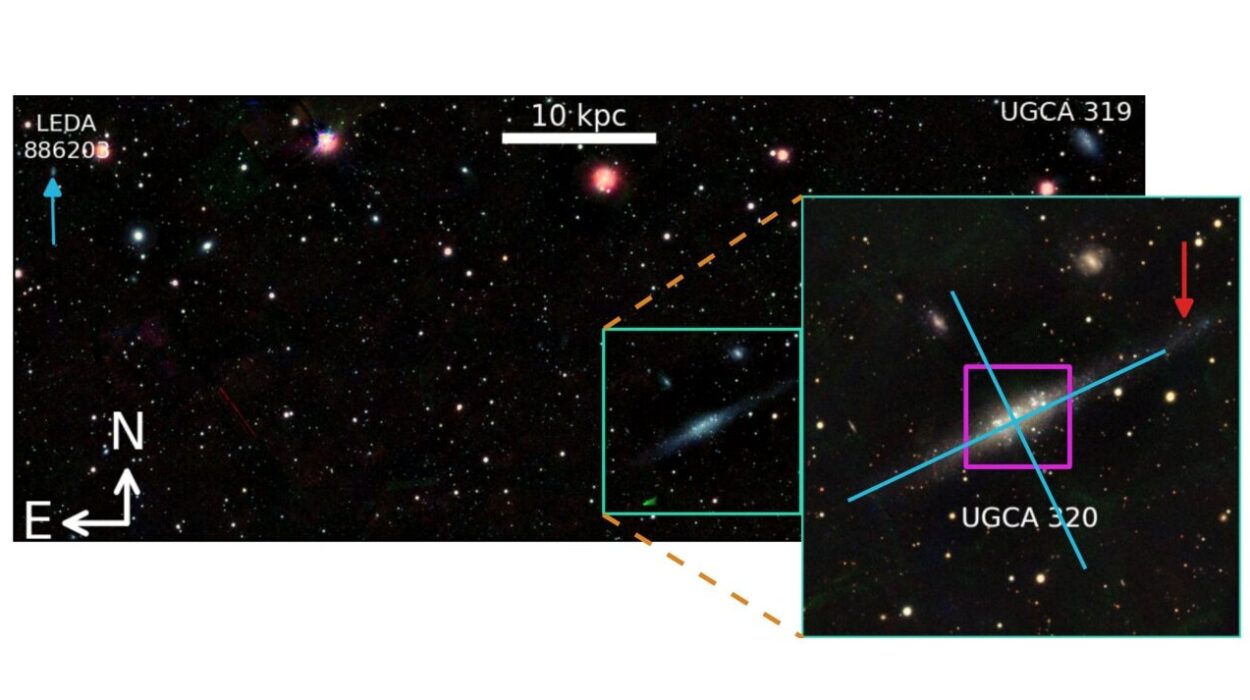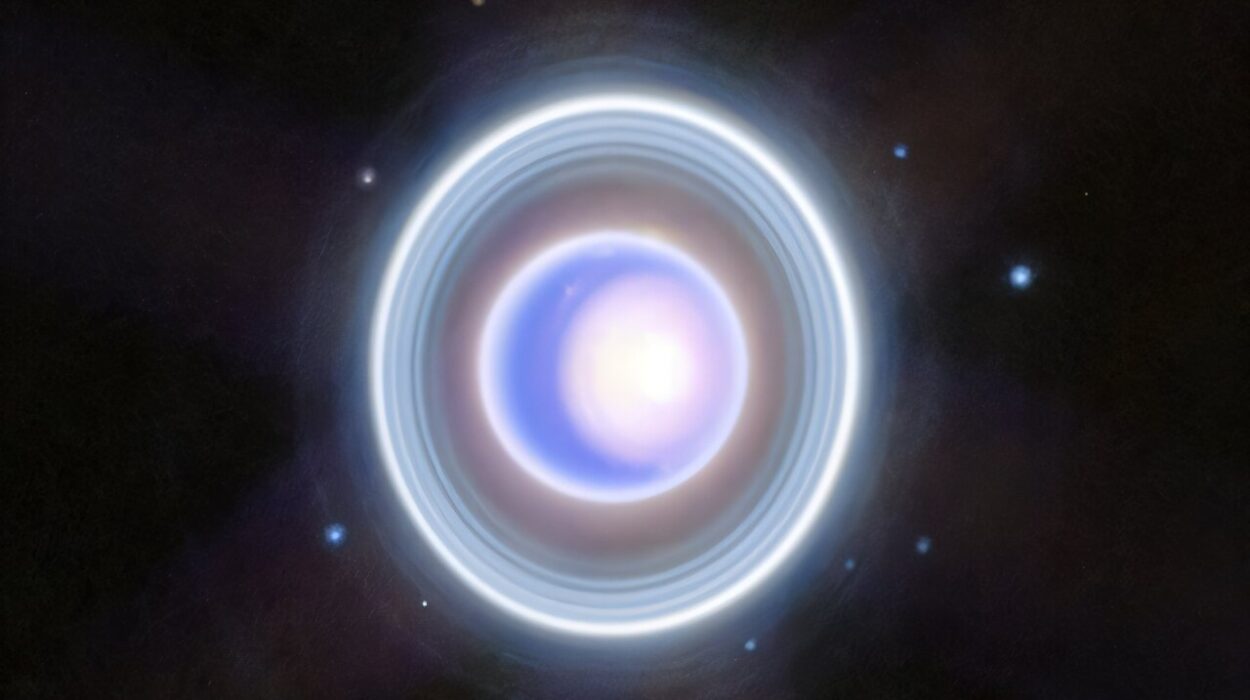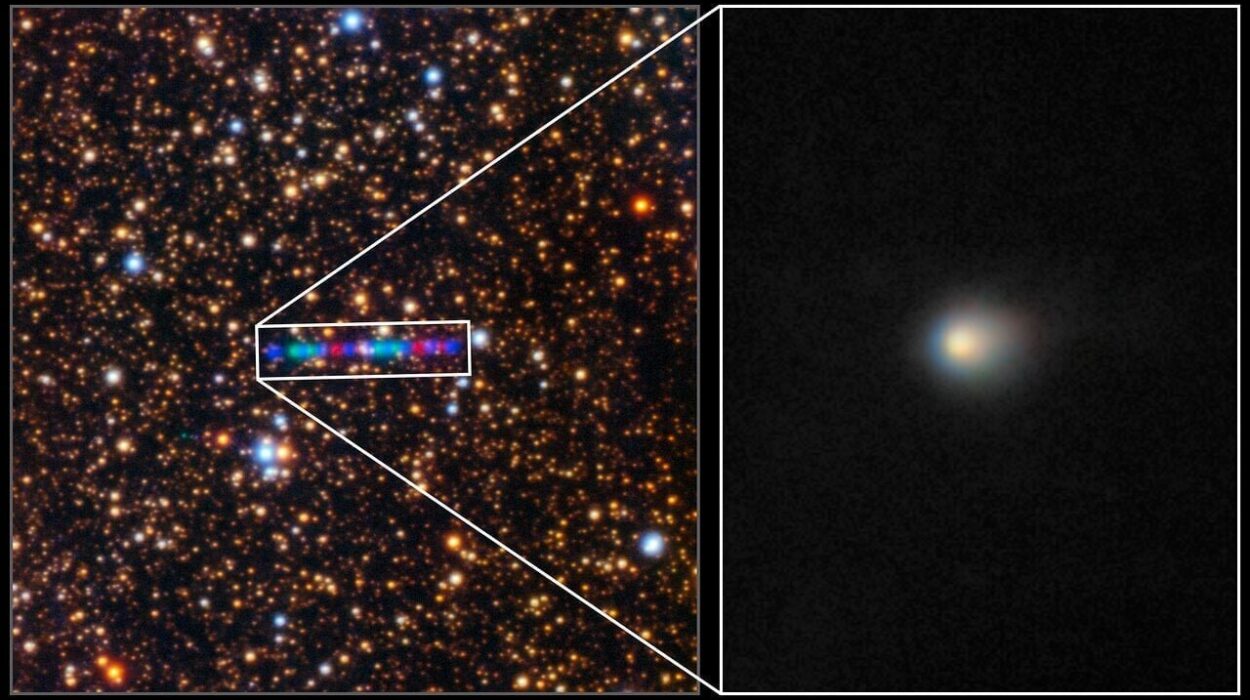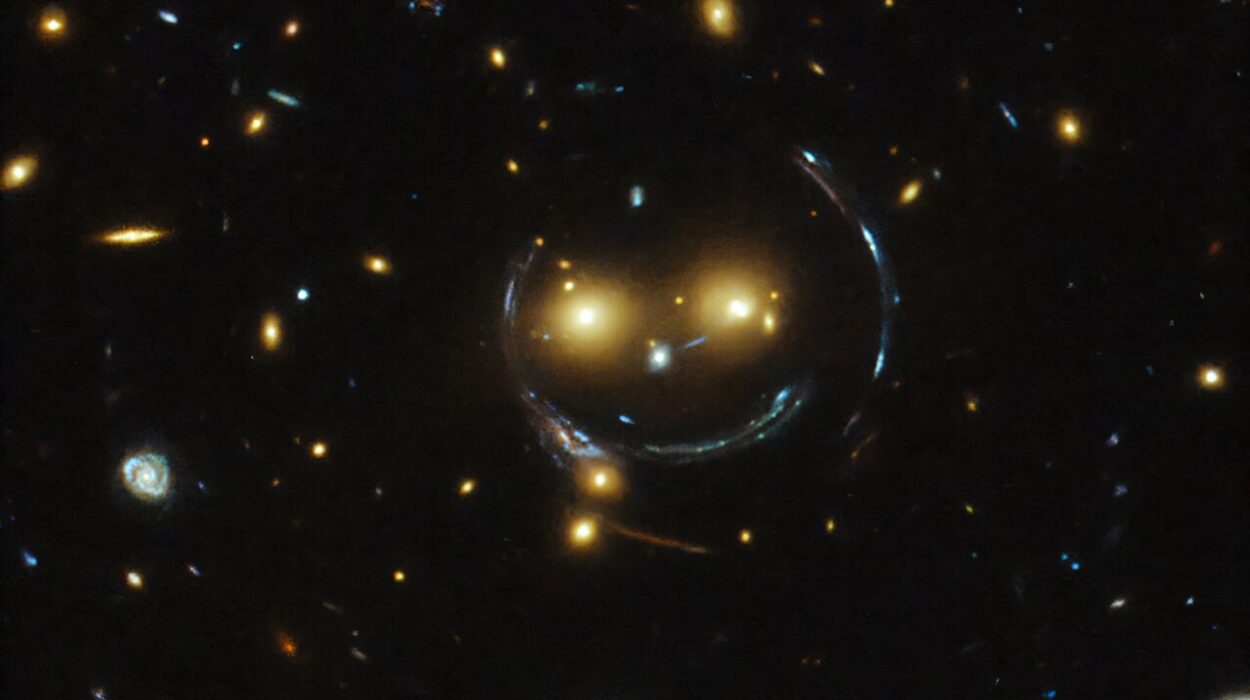In the grand story of astronomy, every breakthrough begins with a new way of seeing. For centuries, humankind has turned its eyes and instruments toward the heavens, yearning to uncover the intricate secrets written in starlight. From Galileo’s modest telescope to today’s colossal observatories, each leap in technology has sharpened our cosmic vision. Yet even now, our understanding of the universe is limited by one stubborn truth: the finer details of distant stars and galaxies are blurred by distance, light, and the atmosphere above us.
That is, until now.
A team of astronomers led by researchers from the University of California, Los Angeles (UCLA) has accomplished something extraordinary. Using a groundbreaking imaging technique—applied for the first time on a ground-based telescope—they achieved the sharpest-ever measurement of a star’s surrounding disk. What they saw was more than just clarity; it was revelation. Beneath the blur of starlight, they uncovered previously invisible structures—a discovery that not only redefines how we see the cosmos but also how we will explore it in the years to come.
The Challenge of Clarity
For astronomers, achieving sharpness in an image is more than a matter of focus—it’s a battle against the limits of physics. The ability to see fine details in the night sky depends on a telescope’s size: the larger its aperture, the more light it collects and the sharper its images become. But even the most massive telescopes are constrained by the wave nature of light itself, a physical boundary known as the diffraction limit.
To surpass that barrier, scientists have often turned to arrays—linking multiple telescopes together to act as one enormous eye. Interferometry, the technique behind this linkage, has revealed breathtaking details of stars, galaxies, and even the event horizons of black holes. Yet building and operating such arrays is complex, expensive, and often limited by geography and weather.
So, what if a single telescope could do what once required an array?
That question lay at the heart of the UCLA-led team’s research. And their answer came in the form of light itself.
The Birth of a New Technique: The Photonic Lantern
At the core of this breakthrough lies a deceptively simple yet revolutionary device known as a photonic lantern. Imagine taking a single beam of starlight—faint, flickering, and constantly distorted by Earth’s atmosphere—and separating it into many smaller streams, each preserving subtle details of its structure. That’s what the photonic lantern does.
Dr. Yoo Jung Kim, a doctoral candidate at UCLA and the study’s lead author, explains it with poetic precision: “In astronomy, the sharpest image details are usually obtained by linking telescopes together. But we did it with a single telescope by feeding its light into a specially designed optical fiber, called a photonic lantern. This device splits the starlight according to its patterns of fluctuation, keeping subtle details that are otherwise lost. By reassembling those measurements, we could reconstruct a very high-resolution image of a disk around a nearby star.”
The analogy is beautiful: imagine listening to a symphony and being able to separate each instrument’s melody from the orchestra. The photonic lantern does something similar with light—it dissects the wavefront into its individual “notes,” allowing astronomers to hear the full complexity of the cosmic song.
How the Light Was Transformed
When starlight enters a telescope, it carries an immense amount of information—about color, temperature, composition, and motion. Yet much of this information is scrambled by the time it reaches the ground. The atmosphere acts like a shimmering veil, distorting the wavefronts of light.
The new system, called FIRST-PL, integrates the photonic lantern into the Subaru Coronagraphic Extreme Adaptive Optics instrument at the Subaru Telescope in Hawai‘i. Developed through international collaboration—between UCLA, the University of Sydney, the University of Central Florida, the Paris Observatory, and the University of Hawai‘i—the setup represents the fusion of global expertise and precision engineering.
As light from a star enters the telescope, it is funneled through the photonic lantern, which splits it into multiple channels based on the shape of its wavefront—like separating a chord into distinct musical notes. Each of those channels is then analyzed by color, spreading the light into a rainbow spectrum that can be studied with unprecedented precision.
The result is a new kind of imaging that transcends traditional limitations. “For any telescope of a given size,” explained UCLA professor of physics and astronomy Michael Fitzgerald, “the wave nature of light limits the fineness of detail you can observe with traditional imaging cameras. This is called the diffraction limit. Our team has been working to use a photonic lantern to advance what is achievable at this frontier.”
Taming the Turbulent Sky
Of course, even the most elegant theory must contend with reality. Earth’s atmosphere is a living, shifting ocean of air. It bends and twists starlight just as heat waves distort the view of a distant horizon on a summer day. To overcome this, the team used adaptive optics—a technology that measures and cancels out the distortions in real time.
But even adaptive optics had its limits. The photonic lantern was so sensitive that residual turbulence still interfered with the measurements. “We need a very stable environment to measure and recover spatial information using this fiber,” said Kim. “Even with adaptive optics, the photonic lantern was so sensitive to the wavefront fluctuations that I had to develop a new data processing technique to filter out the remaining atmospheric turbulence.”
That innovation—essentially teaching the data itself how to see through the atmosphere—was a triumph of both ingenuity and patience.
The Star at the Heart of Discovery
The first celestial target for this new method was a star named Beta Canis Minoris (β CMi), nestled in the constellation Canis Minor, about 162 light-years from Earth. β CMi is not just a point of light—it’s a dynamic system surrounded by a thin, glowing disk of hydrogen gas. This disk rotates rapidly, creating a vivid example of the Doppler effect: the gas moving toward Earth appears slightly bluer, while the gas moving away appears redder.
By applying the photonic lantern’s data to advanced computational algorithms, the researchers could measure these color-dependent shifts with astonishing precision—about five times greater than previously possible.
And in doing so, they found something unexpected.
The disk around β CMi wasn’t symmetrical. It was lopsided, uneven, and strangely structured. “We were not expecting to detect an asymmetry like this,” Kim admitted. “It will be a task for astrophysicists modeling these systems to explain its presence.”
The finding not only confirmed the disk’s rapid rotation but also hinted at unseen forces—perhaps gravitational interactions with planets or other phenomena yet to be understood.
A Global Collaboration to See the Invisible
The photonic lantern is more than just a device—it is a symbol of collaboration across continents and disciplines. It was designed and fabricated by the University of Sydney and the University of Central Florida, then integrated into the Subaru Telescope by teams from the Paris Observatory and the University of Hawai‘i.
Sebastien Vievard, from the University of Hawai‘i’s Space Science and Engineering Initiative, described the spirit of the project: “What excites me most is that this instrument blends cutting-edge photonics with the precision engineering done here in Hawai‘i. It shows how collaboration across the world, and across disciplines, can literally change the way we see the cosmos.”
Indeed, this achievement represents what modern astronomy does best—merging innovation in physics, optics, engineering, and computation to peer ever deeper into the unknown.
Beyond the Diffraction Limit
For more than a century, the diffraction limit was seen as an immutable law of observation, a physical barrier that could not be surpassed. Now, with photonic technologies like the lantern, astronomers are reimagining those limits.
Nemanja Jovanovic, co-leader of the study from the California Institute of Technology, reflected on the broader implications: “This work demonstrates the potential of photonic technologies to enable new kinds of measurement in astronomy. We are just getting started. The possibilities are truly exciting.”
Those possibilities include not only sharper images of stars and their disks but also entirely new methods of studying exoplanets, black hole environments, and interstellar matter. The photonic lantern may one day help scientists probe the atmospheres of distant worlds for signs of life—or capture the delicate dance of dust and gas where new planets are born.
The Beauty of a Lopsided Star
At the heart of this discovery lies a simple truth: beauty often hides in asymmetry. The lopsided disk around β CMi, though unexpected, is a window into the living, dynamic processes of the cosmos. It may reveal how stars shed material, how planets form, or how gravity sculpts the elegant shapes of celestial systems.
Each irregularity, each distortion, tells a story. And through the clarity of the photonic lantern, those stories are beginning to emerge with breathtaking detail.
More information: Yoo Jung Kim On-sky Demonstration of Subdiffraction-limited Astronomical Measurement Using a Photonic Lantern, The Astrophysical Journal Letters (2025). DOI: 10.3847/2041-8213/ae0739 iopscience.iop.org/article/10. … 847/2041-8213/ae0739
